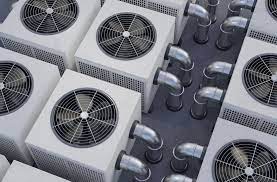Energy efficiency is at the forefront of environmental and economic discussions worldwide, with a significant focus on reducing energy consumption and minimizing carbon footprints. In this context, Heating, Ventilation, and Air Conditioning (HVAC) systems are pivotal in shaping the future of sustainable living and working environments. Innovations in HVAC technology enhance comfort and are pivotal in driving energy savings, thereby transforming how residential and commercial spaces are cooled and heated.
This article delves into how HVAC innovations are transforming comfort and saving.
The Role of HVAC Professionals in Advancing Energy Efficiency
HVAC professionals are at the heart of this transformation, leveraging cutting-edge technologies and methodologies to design, install, and maintain systems that offer optimal performance while consuming minimal energy. Their expertise in understanding air flow dynamics, thermal properties, and system integration makes them indispensable in the quest for more energy-efficient solutions.
Through their work, these professionals ensure that HVAC systems are effective in regulating temperature, ensuring air quality, and aligning with energy conservation and sustainability principles.
Innovations in HVAC Technology
HVAC (Heating, Ventilation, and Air Conditioning) is experiencing a transformative era, thanks to a series of innovations to enhance energy efficiency and comfort in residential and commercial settings. These advancements are reshaping how people heat and cool spaces and setting new benchmarks in environmental stewardship by significantly reducing energy consumption.
Some key innovations in HVAC Technology include:
Smart Thermostats and Controls
Smart thermostats are a pivotal innovation in HVAC technology. These sophisticated devices offer unparalleled control over heating and cooling systems, adapting in real-time to the unique requirements of a given space. They learn the daily routines and preferences of occupants, allowing for an intelligent adjustment of temperature settings to maximize comfort while minimizing energy use. The key benefits include:
- Adaptive Learning: Smart thermostats learn and adapt to the household’s schedule, optimizing heating and cooling cycles accordingly.
- Remote Control: Users can adjust settings from anywhere via smartphone apps, enhancing convenience and control.
- Energy Usage Reports: These devices provide insights into energy consumption patterns, helping identify further savings opportunities.
Geothermal Heat Pumps
Geothermal heat pumps harness the earth’s stable subsurface temperature to provide efficient heating, cooling, and hot water. This technology represents a significant leap towards sustainability, offering:
- High Efficiency: Utilizing the consistent temperatures underground, these systems operate at higher efficiencies than traditional HVAC systems.
- Reduced Carbon Footprint: By relying on the earth’s natural heat, geothermal pumps drastically reduce reliance on fossil fuels.
- Longevity and Reliability: These systems have fewer moving parts and are less susceptible to wear and tear, ensuring longer service life.
Variable Refrigerant Flow (VRF) Systems
VRF technology is revolutionizing commercial HVAC by providing energy-efficient solutions that cater to the diverse needs of different zones within a building. The advantages include:
- Simultaneous Heating and Cooling: VRF systems can heat certain building areas while cooling others, optimizing comfort and efficiency.
- Modular Design: This allows for flexibility in installation and scalability, accommodating various building sizes and designs.
- Energy Savings: By precisely matching the energy use to the demand, VRF systems can significantly reduce wasted energy.
Energy Recovery Ventilators (ERV)
ERVs are crucial in maintaining optimal indoor air quality without sacrificing energy efficiency. They work by:
- Recovering Energy: ERVs capture energy from exhaust air and use it to precondition incoming fresh air, reducing the HVAC load.
- Improving Air Quality: By continuously exchanging indoor air with fresh outdoor air, ERVs help maintain a healthier indoor environment.
- Enhancing Comfort: These systems ensure constant fresh air, making indoor spaces more comfortable and livable.
These innovations in HVAC technology are setting new standards for energy efficiency and comfort, marking a significant step forward in the quest for sustainable and environmentally friendly heating and cooling solutions.
The Impact of Regulatory Standards and Incentives
Governmental regulations and incentives play a crucial role in promoting the adoption of energy-efficient HVAC technologies. For instance, standards such as the Seasonal Energy Efficiency Ratio (SEER) for air conditioners and the Annual Fuel Utilization Efficiency (AFUE) for furnaces provide benchmarks for energy performance, encouraging manufacturers to develop more efficient systems.
Additionally, incentives like tax credits and rebates for energy-efficient HVAC installations motivate consumers and businesses to invest in greener technologies. Accelerating the transition to more sustainable energy solutions.
The Future of HVAC: Towards a Sustainable Horizon
Looking ahead, the future of HVAC is intrinsically linked to integrating renewable energy sources. Such as solar and wind power, with HVAC systems. This integration will reduce reliance on fossil fuels and pave the way for net-zero energy buildings. Where the total energy used equals the amount of renewable energy created on-site.
Moreover, advancements in materials science. Such as the development of phase-change materials for thermal storage. Which promises to enhance the energy efficiency of HVAC systems further.
Takeaway
The innovations in HVAC technology and the pivotal role of HVAC professionals are central to unlocking energy efficiency in residential and commercial spaces. By optimizing comfort and reducing energy consumption. These advancements contribute significantly to the global effort to mitigate climate change and promote sustainable living. As technology evolves, the potential for even greater efficiencies and environmental benefits remains vast. Promising a future where comfort and sustainability go hand in hand.

